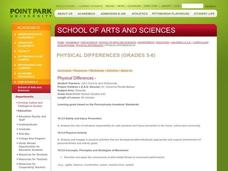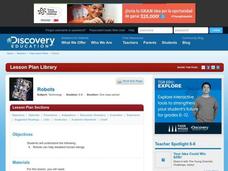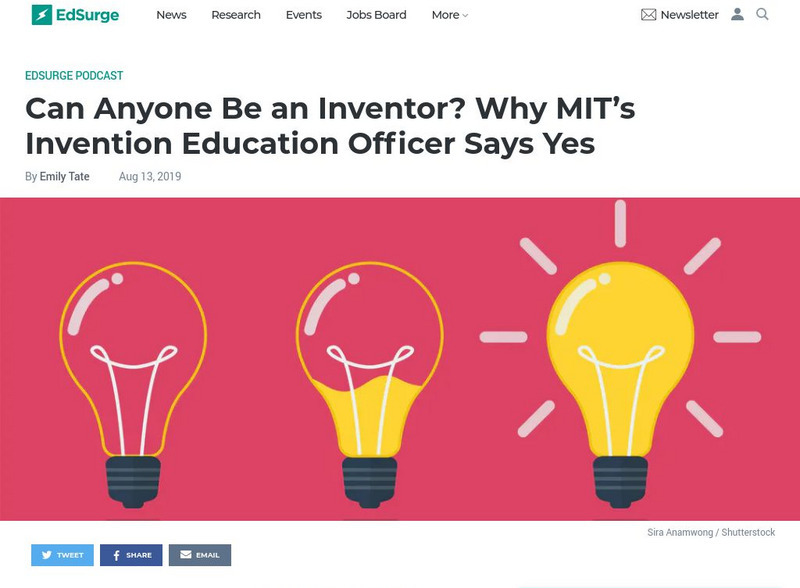Curated OER
Eugenics Worksheet
Students become familiar with the vocabulary associated with treatment of disabilities. In this Eugenics lesson plan, students complete a worksheet on Eugenics and discuss the treatment of people with disabilities in the past and present.
Curated OER
Diversity
Students access prior knowledge of the five senses and relate to students with disabilities. In this people with disabilities lesson, students research and use a Venn diagram to compare and contrast famous people and their...
Curated OER
Religion and Ethics: Living with Special Needs
Students explore human behavior by exploring mental and physical disabilities. In this learning disability lesson, students identify the different disabilities students have which prevent them from working at the same pace as the rest of...
Workforce Solutions
On the Job
Four lessons spotlight a variety of professions while boosting listening and observational skills and making inferences. Lesson one challenges pupils to group cards based on a commonality then justify the relationship they see....
Curated OER
Lesson 23: Reproduction - Day 5: Birth Control
High schoolers with mild to moderate disabilities discuss human reproduction and the importance of preventing pregnancy. They review reproductive anatomy, sexual decision making, and what birth control is. The lesson plan concludes with...
Perkins School for the Blind
Name That Frequency
How cool! This plan uses old cassette tapes to show frequency from traveling vibrations. To prepare for the lesson, tactile frequency diagrams are made and then placed near the video tapes or dominoes that are already set up. When they...
Curated OER
My Mechanical Ear Can Hear!
Learners study the concepts associated hearing being aided by biomedical devices. In this hearing lesson plan, students investigate different types of hearing impairments and the biomedical devices that engineers develop to aid people...
Curated OER
Reading Without Seeing: Louis Braille and the Braille Alphabet
Learners study Louis Braille and the history of the Braille alphabet. They participate in an activity using the sense of touch to determine how the Braille alphabet works.
Alabama Learning Exchange
The Five Senses: How They Relate to our World
Young scholars explore the five senses and the significance of each sense. In this five senses and diversity lesson, students listen to You Can't Smell a Flower With Your Ear by Joanna Cole and take a walk observing opportunities to use...
Curated OER
UV: Use Caution
Students investigate the concept of skin cancer and its relation to using tanning beds that expose people to artificial ultraviolet rays. They research the effects and look for ways to prevent the onset of skin cancer from the...
Curated OER
Dyslexia
Students put a plus sign next to the picture if it is something they can do well. They help determine if each activity requires teaching, practice, and/or help from other people. They create scenarios that would require extra help for each.
Curated OER
Autism and Autism Spectrum Disorders: Disorders Extending Beyond the "Norm"
Learners develop an understanding of autism by engaging in an inquiry-based discussion. Pupils are exposed to the vast array of defining characteristics of autism spectrum disorders. They create posters about the developmental...
Curated OER
Help, I can't reach it!
Students learn the major organ systems in the human body and research simple machines on the Internet; They design an informational brochure about a medical profession and present that career topic to the class.
Curated OER
Robots
Students state the advantages of robots in our lives. In this technology lesson, they design a robot that addresses a certain human disability. They draw the robot and describe its positive impact to society.
Other
Engineering for Change: Necessary Trade Offs When Co Designing New Technology
The co-design of new technology with communities has benefits and trade-offs. Engineers Without Borders Australia describe a co-design project in rural Cambodia that they participated in. The goal was to design assistive technologies...
Other
Ed Surge: Can Anyone Be an Inventor? Mit's Invention Education Officer Says Yes
This article is part of The EdSurge Podcast. Today, there are plenty of middle and high school students who have developed solutions to major economic and social challenges, ranging from health care and transportation to agriculture and...















